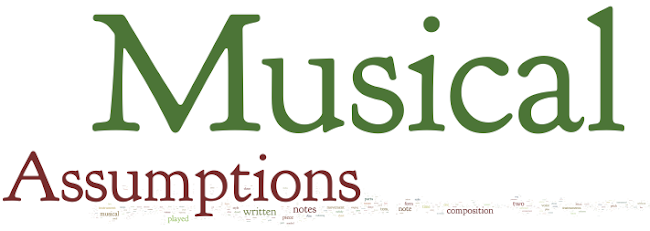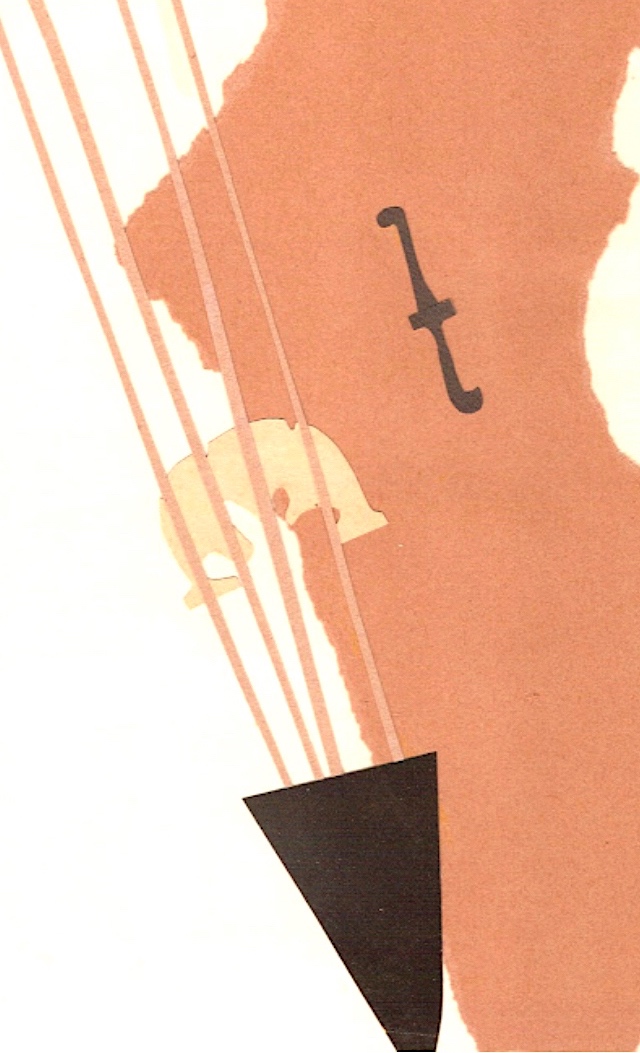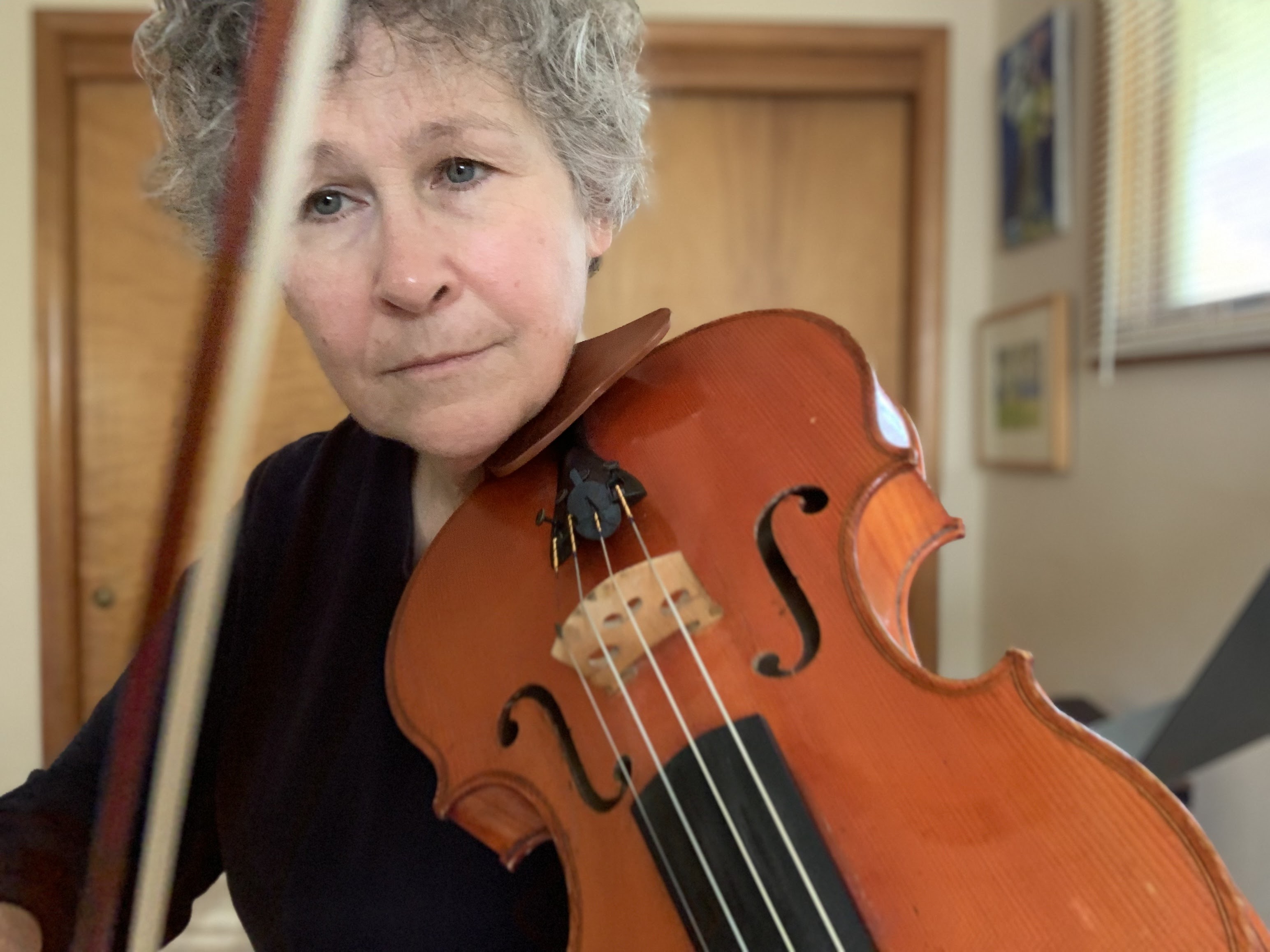Tuesday, March 30, 2021
Four Coliloquies for Flute and Oboe
It is a really windy day on the prairie today, so I thought it would be a good day to share this video (which is cued to begin when this piece begins). The fourth "coliloquy" poses a question about where the wind comes from, and where the wind goes.
You can follow the music here, if you like.
Monday, March 29, 2021
"A Tunes" on Amazon
It also has a ranking (which I hope will go up one of these days). Bear in mind that this is day one for this listing.
I hope that people familiar with my work will leave a comment!
Friday, March 26, 2021
Marcel Proust, guest blogger
. . . just so I found my bearings in this music which was new to me, and recognized the landscape of the Vinteuil sonata; and, more wonderful than any girl, the little phrase, wrapped, caparisoned in silver, streaming with brilliant sonorities light and soft as scarves, came towards me, still recognizable under these new ornaments. My joy at meeting it again was increased by the familiar, friendly tone in which it spoke to me, so persuasive, so simple, yet allowing its rich, shimmering beauty to unfold in all its splendour. Its purpose this time, however, was simply to show me the way, a different path from that of the sonata, for this was a different, hitherto unperformed work by Vinteuil, where he had simply chosen to make an allusion (explained at this point by a note in the programme which we should have had before us) by introducing, just for a moment, the little phrase. Having been recalled for a moment in this way, it disappeared and I found myself in an unknown world once more, but I now knew, and everything I heard confirmed, that this was one of the worlds that I had not even imagined Vinteuil could have created; for when, tiring of the sonata, whose universe was exhausted for me, I tried to imagine others equally beautiful but different, I simply did as those poets do who fill their imagined Paradise with meadows, flowers and rivers duplicating those on Earth. What I now heard caused me as much joy as the sonata would have done if I had not known it; that is to say, it was just as beautiful, but different. Whereas the sonata opened on a lily-like dawn in the country, dividing its floating whiteness but only to attach it to the light but thick tangle of a rustic bower of honeysuckle and white geraniums, the new work took off on a stormy morning over flat, level surfaces like those of the sea, amid an acid silence, in an infinity of emptiness, and then it was in a rosy dawn that this unknown universe began to be built before me, drawn out of silence and night. This new, red light, so absent from the tender, rustic and candid sonata, tinged all the sky, as dawn does, with a mysterious hope.This passage, and the passages surrounding it from "The Prisoner," the fifth volume of In Search of Lost Time brings to my mind and ear the absolutely delightful Saint-Saëns Septet, Opus 65:
Tuesday, March 23, 2021
Sunday, March 21, 2021
Virtue and Music
I spent years practicing so that I could get better, but, like most people, I had personal limitations that I simply couldn't transcend. To add insult to injury I took the phrase, "You are only as good as your last performance" to heart. It was only through changing instruments, working carefully and methodically for the past thirty years to build a technique, and learning how to solve problems my students have encountered, that I have been able to begin too grow through what I believed were personal limitations. I know that I have become a better violinist, violist, teacher, and composer than I was a year ago, and I am grateful that I will continue to work and grow.
My adult experience totally debunks my childish idea that people are the way they play. My new "catch phrase" is "the more carefully and consistently you practice, the more beautifully and consistently you will play." And my goal is to learn things from every "last performance," and to do better the next time.
This kind of musical mental health is hard won, particularly when music is (and always has been) so personal to me. It is not just something I "do." A good friend who knows me well told me that music is my "transition object," serving as the major substitute for the love that I lacked as a child. I can create it and bring it to life myself, and I can construct within in it a world where truth and virtue reign supreme. As CEO of my work, I am in a position to make decisions about everything (at least while I am practicing and writing). I find total joy in doing my work. It is my way of finding amour-propre, a word I recently learned from reading Proust. And, best of all, I don't need to seek approval for what I already know is as good as I can make it be. Good enough for me is good enough. And it is up to me to raise my own standards.
Early on I learned that giving love feels very similar to receiving love, and since making music is how I habitually experience love, sharing music is the best way of expressing it. That is why I write music for people, and that is why I share most of what I write in the IMSLP. I feel balanced when I have a writing, arranging, or performing project in the works (and I feel out of balance when I don't). A piece of music isn't complete for me unless it has been played or heard by someone else.
I was unaware the extent to which many of those great musicians I used to believe must be kind and virtuous used their feelings of superiority to "thrust" their greatness "upon" younger musicians who wanted to find their way in the professional musical world. My (more attractive than I was) female friends at Juilliard often believed that their accomplished older seducers (and would-be seducers) believed in their musical talent and their intelligence. I somehow got the message (told to me in no uncertain terms by my teacher, Julius Baker) that in order to be successful as a musician a woman needed to be attractive. Capitalizing on the way I looked in order to be successful in music was not a game I was equipped to play. I considered myself limited then. Now I consider myself fortunate.
Thursday, March 18, 2021
Kenneth Woods on James Levine
Tuesday, March 16, 2021
Monday, March 15, 2021
Sondheim's "No one is Alone" performed by Elena Snow-Evrad and Beatriz Helgura-Snow
This was exactly the song I needed to hear this morning. And in this performance its message is so very clear.
Saturday, March 13, 2021
Adoration in Memphis
Friday, March 12, 2021
Thank you, Augustin!
Wednesday, March 10, 2021
Imagining an alternate reality
I am fortunate that I can hear music in its natural state (i.e. not translated into impulses and played through speakers) when I practice by myself or when I play with Michael. I feel fortunate that when the weather was still warm I was able to play a little bit of chamber music outside.
The most intimate indoor musical connections I have been able to make with people outside of my two-person household this year have been with my students (giving lessons through FaceTime) and working with people via Zoom (mostly) who are performing music I have written. The kind of contact I have had with performing musicians this year has been amazing. Before the Pandemic I rarely had this kind of contact. But now that we are all working from our homes it happens all the time. I never before imagined sitting, for example, in on a rehearsal in London in order to hear a rehearsal of a piece I wrote intended to be performed over the internet.
I wonder how musical life will look when enough of the people on the planet have been vaccinated, and when life goes back to that new normal we are looking at somewhere along the horizon through different sets of binoculars (some more rose-colored than others). I hope that high school orchestra teachers will still let me into their rehearsals. I hope that what musicians have learned about supporting one another will stay with us, because times are always difficult for musicians. Egos are fragile in our business, and they are also omnipresent. So is hierarchy and the resulting marginalization.
We have been able to discuss sexism, racism, and other forms of bigotry in the world of "classical" music with relative ease from behind a screen, but when we are "back" in real time and real space, will people continue to speak out when they observe behavior that is discriminatory?
We musicians (who by necessity spend a large amount of time in isolation anyway) really miss playing for people. It is in playing for people that we feel connected, and, if all goes well, we can help the people listening to one another.
I wonder what it will be like to play concerts again?
Tuesday, March 09, 2021
"Adoration" performed by violinist Laura Colgate and pianist Elizabeth Hill
Monday, March 08, 2021
VIII Arachnida
Thursday, March 04, 2021
Solving technical problems with musical answers: thoughts about teaching
I got my "author's copies" of A Tunes this week, so I can assure you that physical copies are now available. It was a treat yesterday to teach lessons using a physical copy.
I thought that it might be a good idea to write a post expaining why I wrote it and what I hope teachers and students will get from using it. I have included a bit of my history for people who are not regular readers of this blog.
Tuesday, March 02, 2021
Music by Women Festival Concert Tonight (Live on YouTube)
Here's the program
Suite in a minor - Élisabeth-Claude Jacquet de la Guerre (1665-1729)
Prelude
Sarabande
Gavotte Allegro
Aria Affettuoso
Cannaris
Elizabeth CD Brown, baroque guitar (Pacific Lutheran University)
“Wit and Whimsy: The Flute Music of Elaine Fine”
A Flutist’s Garden of Verses: Five Pieces for Solo Alto and Bass Flute - Elaine Fine
1. The Swing
2. Foreign Lands
3. My Shadow
4. My Bed is a Boat
5. Singing
Carol Shansky (New Jersey City University)
In An Old House in Paris: An Antiphonal Piece for Two Musicians to Play Over the Internet - Elaine Fine
Carol Shansky (New Jersey City University)
Michelle Kiec (Kutztown University)
The Whistleblower Complaint - Elaine Fine
Carol Shansky (New Jersey City University)
Fantasy in A - Joanna Kenyon
Fabio Menchetti, piano (Washington State University)
Rejoice, Rejoice - Lelia Naylor Morris (1862-1929)
arr. Hersey Dr. Brian Meixner, euphonium (High Point University)
Dr. Joanna Hersey, euphonium (University of North Carolina at Pembroke)
Dr. Dan Johnson, tuba (University of North Carolina at Wilmington)
Dr. William Beach, tuba (Campbell University)
The Gift of the Condor: a new piece to teach kids about the orchestra
The total performance time is 22 minutes.
The score, parts, and script are available on this page of the IMSLP.
You can also listen to a midi recording here. It takes about 19 minutes, and one of the sections of the midi has a narration made by my in-house narrator (i.e. me).
You can follow the script by going here. Robin and I were inspired to write this because we realized that the animals in "Peter and the Wolf" and the "Carnival of the Animals," pieces that we have played at children's concerts for half a century, do not resonate as well with twenty-first-century children as they did with children of previous centuries. We felt that the menagerie needed a twenty-first-century update. We consulted our students in order to find the animals that would resonate most musically with them. The whale was included because one of my granddaughters loves whales.
Here is the list of animals represented, along with the instruments and instrumental combinations that represent them:
Bunny (featuring the xylophone)Olivia/Oliver, the solo child violinist, engages in musical dialogue with all of these animals. The technical demands of the Olivia/Oliver part are minimal: the part could be played by a confident young violinist who has been playing for two or three years and likes to do a little acting. The story includes riddles, and can involve the work of a "quick drawing" visual artist as well as imaginative drawings by kids in the audience. There are many possibilities for engaging and interactive performances.
Condor (featuring the bass clarinet, the viola, and the timpani)
Dog (featuring the trumpet)
Dragon (featuring a brass quartet)
Raccoon (featuring a woodwind trio)
Squirrels (featuring the strings)
Crocodile (featuring the snare drum and the trombone)
Snakes (featuring strings, trumpet, and woodwinds)
Unicorn (featuring the French Horn, of course)
Camel (featuring the flute and the English Horn)
Whale (featuring the tuba)
Teddy Bear (featuring the strings)
The themes involved are curiosity, imagination, and engagement.







